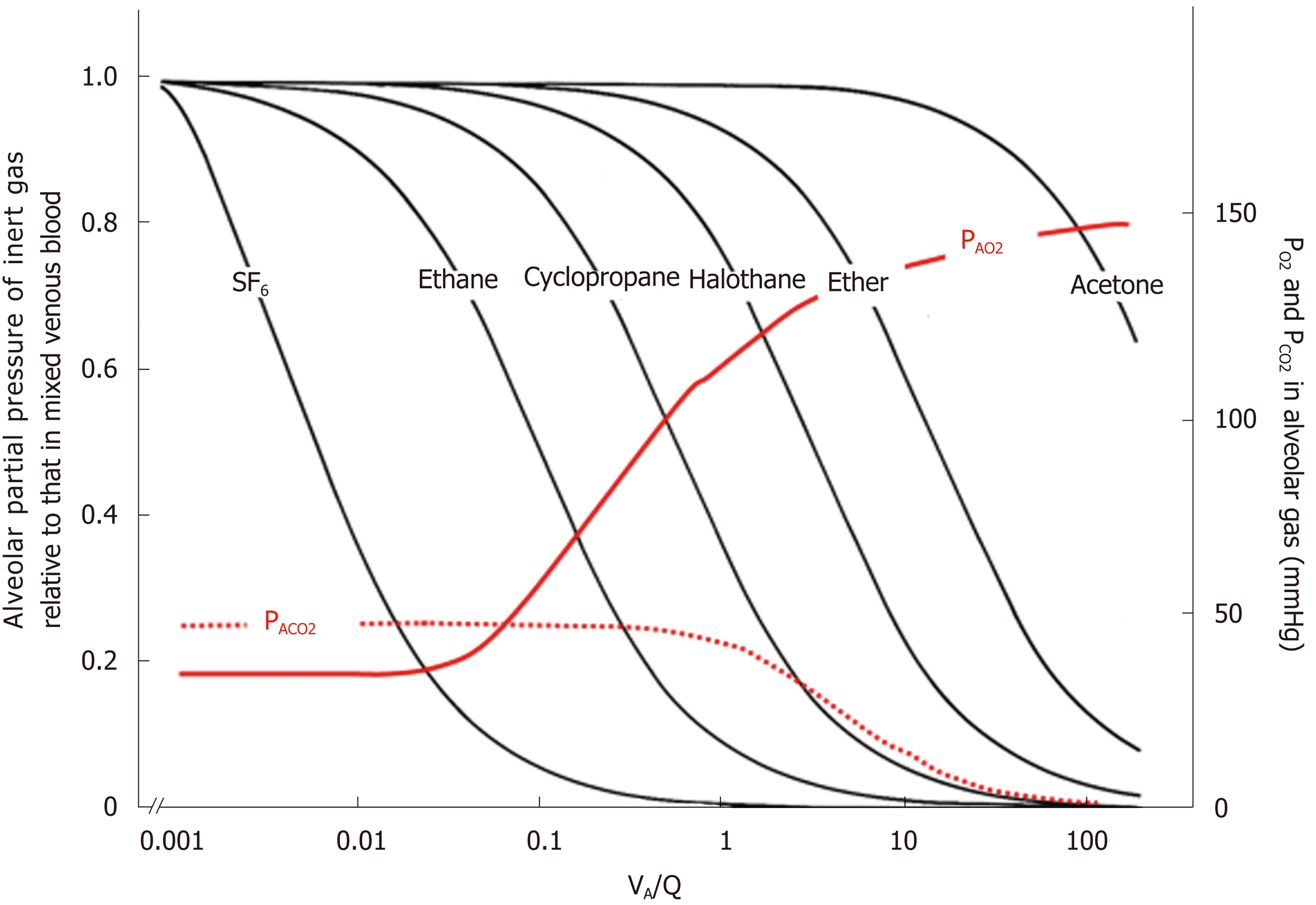Copyright
©The Author(s) 2019.
Figure 13 Partial-pressure equilibration of gases between alveolar gas and capillary blood.
Inert gases that are not combined with erythrocyte hemoglobin (Hb) show instantaneous equilibration between alveolar gas and capillary blood. O2 and CO2 that have relatively low affinity with Hb need some time for completing equilibration between alveolar gas and capillary blood. CO and NO (red lines) that have very high affinity with Hb prevent rise in their partial pressures in capillary blood. Hence, CO and NO do not reach partial-pressure equilibration between alveolar gas and capillary blood any more even in normal lung. Affinity of NO with Hb is extremely high and chemical reaction of NO with Hb is very rapid such that partial pressure of NO in capillary blood is maintained at negligible level. Therefore, there is no “back-pressure” effect during measurement of DLNO. However, affinity of CO with Hb is lower than that of NO (i.e., 1/1800 times that of NO). Therefore, partial pressure of CO in capillary blood rises gradually such that “back-pressure” of CO from capillary blood should not be ignored while measuring the pulmonary diffusing capacity for CO.
- Citation: Yamaguchi K, Tsuji T, Aoshiba K, Nakamura H, Abe S. Anatomical backgrounds on gas exchange parameters in the lung. World J Respirol 2019; 9(2): 8-29
- URL: https://www.wjgnet.com/2218-6255/full/v9/i2/8.htm
- DOI: https://dx.doi.org/10.5320/wjr.v9.i2.8









